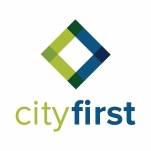

City First Bank, N.A.

District of Columbia, United States
April 2017
Deposit bank - Developed Markets
Service with Minor Environmental Footprint
United States
City First Bank, National Association, a wholly owned subsidiary of Broadway Financial Corporation (Nasdaq-CM: BYFC), collectively referred to as CityFirstBroadway, is a leading provider of financial products and services to economically underserved urban communities. Backed by 75 years of experience and operations in Washington, D.C. and Los Angeles, California, City First Bank offers a variety of commercial real estate loan products, services, and depository accounts that support investments in affordable housing, small businesses, and nonprofit community facilities located within low-to-moderate income urban neighborhoods. With the City First network of nonprofits, City First Enterprises, Homes By CFE and City First Foundation, the City First branded family of community development finance companies delivers a robust lending and deposit platform, plus triple-bottom line results: people, planet and profits. The Bank is a Community Development Financial Institution (CDFI), Minority Depository Institution (MDI), Certified B Corp, as well as a member of the Global Alliance of Banking on Values. Learn more at cityfirstbank.com.
Overall B Impact Score
Governance 22.0
Governance evaluates a company's overall mission, engagement around its social/environmental impact, ethics, and transparency. This section also evaluates the ability of a company to protect their mission and formally consider stakeholders in decision making through their corporate structure (e.g. benefit corporation) or corporate governing documents.
What is this? A company with an Impact Business Model is intentionally designed to create a specific positive outcome for one of its stakeholders - such as workers, community, environment, or customers.
Workers 26.1
Workers evaluates a company’s contributions to its employees’ financial security, health & safety, wellness, career development, and engagement & satisfaction. In addition, this section recognizes business models designed to benefit workers, such as companies that are at least 40% owned by non-executive employees and those that have workforce development programs to support individuals with barriers to employment.
Community 19.8
Community evaluates a company’s engagement with and impact on the communities in which it operates, hires from, and sources from. Topics include diversity, equity & inclusion, economic impact, civic engagement, charitable giving, and supply chain management. In addition, this section recognizes business models that are designed to address specific community-oriented problems, such as poverty alleviation through fair trade sourcing or distribution via microenterprises, producer cooperative models, locally focused economic development, and formal charitable giving commitments.
Environment 5.1
Environment evaluates a company’s overall environmental management practices as well as its impact on the air, climate, water, land, and biodiversity. This includes the direct impact of a company’s operations and, when applicable its supply chain and distribution channels. This section also recognizes companies with environmentally innovative production processes and those that sell products or services that have a positive environmental impact. Some examples might include products and services that create renewable energy, reduce consumption or waste, conserve land or wildlife, provide less toxic alternatives to the market, or educate people about environmental problems.
What is this? A company with an Impact Business Model is intentionally designed to create a specific positive outcome for one of its stakeholders - such as workers, community, environment, or customers.
Customers 56.8
Customers evaluates a company’s stewardship of its customers through the quality of its products and services, ethical marketing, data privacy and security, and feedback channels. In addition, this section recognizes products or services that are designed to address a particular social problem for or through its customers, such as health or educational products, arts & media products, serving underserved customers/clients, and services that improve the social impact of other businesses or organizations.
What is this? A company with an Impact Business Model is intentionally designed to create a specific positive outcome for one of its stakeholders - such as workers, community, environment, or customers.